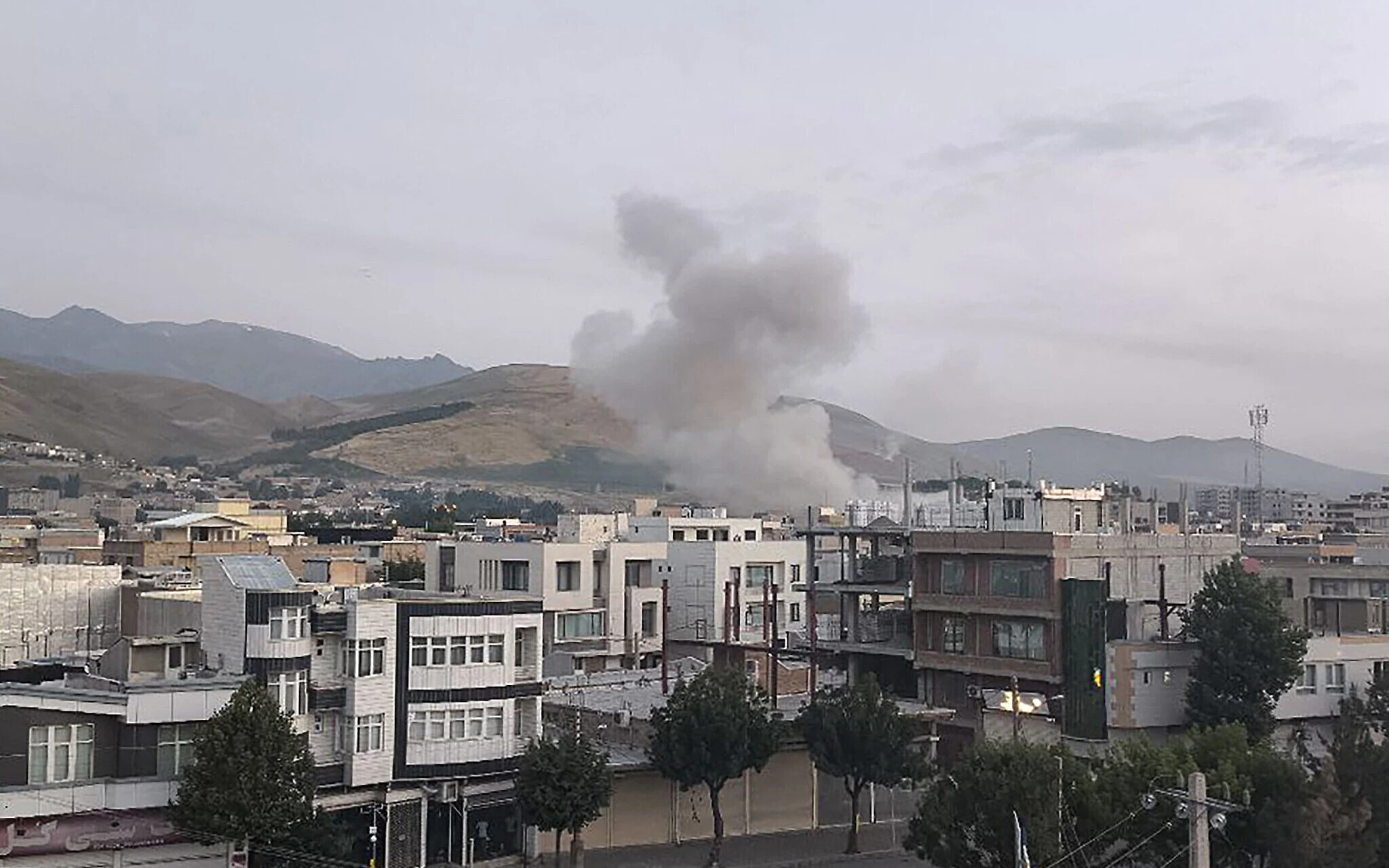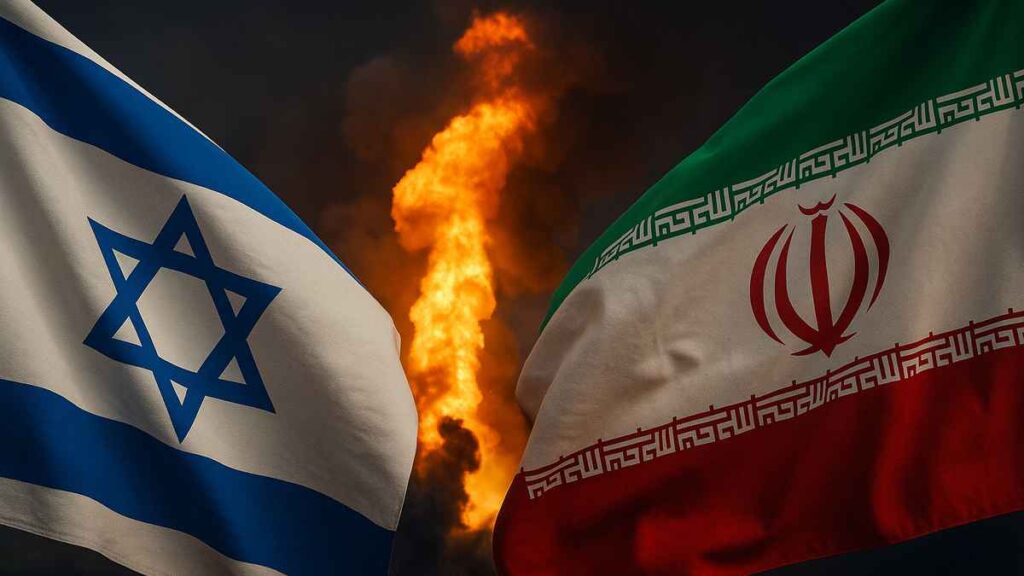
Iran–Israel Conflict Escalates in 2025: Geopolitical Ramifications and Global Stakes
Published: June 13, 2025
By: Sheikh Inshaal Nafees
The conflict between Iran and Israel has entered a new and dangerous phase in mid-2025, marked by direct military confrontations, strategic airstrikes, and intensified diplomatic efforts. With Iran advancing its nuclear ambitions and Israel engaging in preemptive strikes, the volatile situation is threatening to spiral into a broader regional war that could have global economic and political consequences.
Timeline of Recent Events

June 12–13, 2025: Israeli Strikes Hit Tehran
On June 13, 2025, the Israel Defense Forces (IDF) executed a preemptive strike on Iran, targeting critical nuclear and military infrastructure around Tehran. The operation was in response to intelligence indicating Iran’s acceleration of uranium enrichment and weaponization capabilities.
Israeli Prime Minister Benjamin Netanyahu stated the action was a “necessary measure to prevent Iran from reaching a nuclear threshold.” Explosions were confirmed in western Tehran, with reports of casualties and significant damage to research and defense facilities.
Iranian Response and Retaliatory Measures
In retaliation, Iran’s Islamic Revolutionary Guard Corps (IRGC) declared a state of high alert, mobilizing its ballistic missile divisions and drone squadrons. Commander Hossein Salami vowed a “historic response” to what he called an act of war.
Iran also resumed construction of a new underground uranium enrichment site, defying the international community and further breaching its obligations under the now-defunct Joint Comprehensive Plan of Action (JCPOA).
U.S. and International Reactions
U.S. Strategic Posture
The United States, while officially not involved in the airstrikes, acknowledged it was informed beforehand. President Donald Trump urged restraint but confirmed the repositioning of naval assets in the Persian Gulf and authorized the evacuation of non-essential personnel from diplomatic missions in Iraq, Bahrain, and Kuwait.
American intelligence officials emphasized the priority of protecting U.S. assets in the region, while also supporting backchannel diplomacy through Omani and Qatari intermediaries.

Global Diplomatic Moves
The United Nations Security Council convened an emergency session, with Secretary-General António Guterres calling for an immediate ceasefire and initiation of direct dialogue. European leaders, particularly from France and Germany, urged Israel and Iran to return to negotiations to avoid “a catastrophic regional escalation.”
Broader Regional and Economic Impact
Potential for Wider Conflict
The current Iran–Israel conflict risks dragging in Lebanon, Syria, Iraq, and even Saudi Arabia, given the web of alliances and proxy forces. Hezbollah, Iran’s key proxy in Lebanon, has reportedly placed its forces on alert along the northern Israeli border. In Syria and Iraq, pro-Iranian militias have already clashed with U.S. and Israeli reconnaissance units.
Oil Markets and Global Economy
The conflict has pushed crude oil prices to a six-month high, with Brent Crude surpassing $95 per barrel. Analysts warn of long-term disruptions to global supply chains, especially if Iran closes the Strait of Hormuz, a chokepoint through which 20% of the world’s oil flows.
Rising energy prices are expected to drive inflation across Europe and Asia, compounding the post-pandemic economic instability still lingering in many countries.
Strategic and Security Implications
Israeli Strategy
Israel appears committed to a “shadow war becoming open conflict” policy shift. The Netanyahu government has repeatedly signaled that it will not allow Iran to become a nuclear power, even at the risk of war. The current airstrikes mark the first time Israel has directly targeted central Iran on this scale.
Iranian Doctrine and Asymmetric Warfare
Iran’s strategy includes retaliatory cyber attacks, drone warfare, and the use of regional proxies like Hezbollah, the Houthis, and PMF (Popular Mobilization Forces) in Iraq. Tehran’s leaders are also banking on a rally-around-the-flag effect domestically to quell dissent and galvanize nationalist sentiment.
What Comes Next?
While international diplomacy continues behind closed doors, the likelihood of further escalation remains high. Both countries are locked in a zero-sum perception of national security, and absent a breakthrough, the risk of all-out war involving multiple actors is real.
Key watchpoints in the coming days include:
- Iranian missile activity and drone strikes in Israeli or U.S.-aligned territories.
- Further Israeli aerial operations.
- Reactions from Gulf States, especially Saudi Arabia and the UAE.
- U.N. or EU-led ceasefire initiatives.
Conclusion
The Iran–Israel conflict of 2025 represents more than just a regional standoff; it is a geopolitical flashpoint with deep-rooted historical grievances, religious undertones, and nuclear dimensions. The decisions made in the coming days will not only affect the Middle East but may also reshape global diplomatic alignments and economic stability.
For ongoing coverage and updates on Middle East tensions and global security news, follow TechnPress.com.